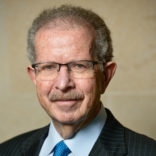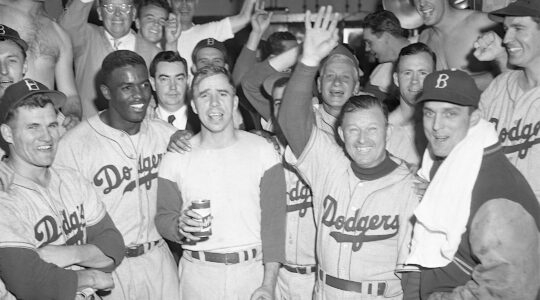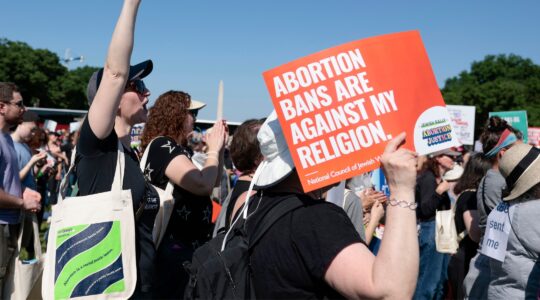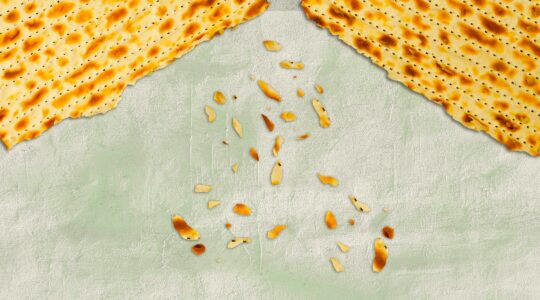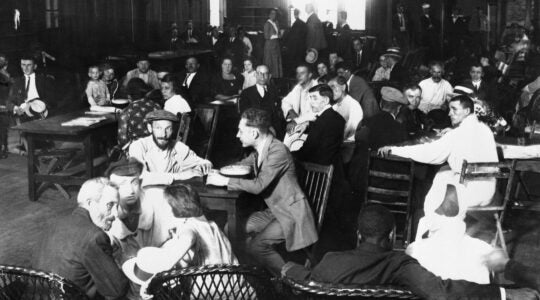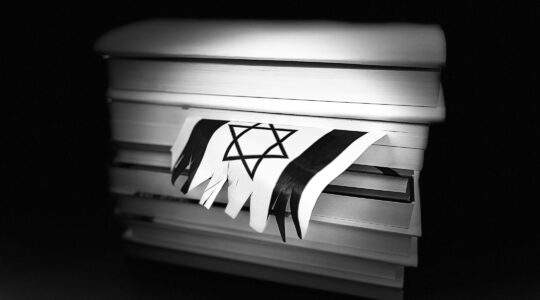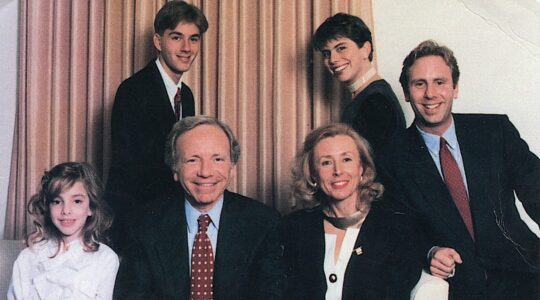NEW YORK (JTA) — The destruction of Solomon’s Temple by the Babylonians in 586 BCE was the first great national tragedy in Jewish history. During the subsequent exile, four fast days commemorating the calamitous event were added to the Jewish calendar: the 10th day of the Hebrew month of Tevet, when the siege of Jerusalem began; the 17th of Tammuz, when the walls of Jerusalem were breached; the 3rd of Tishri, marking the assassination of Gedaliah, governor of Jerusalem; and Tisha b’Av, the 9th of Av, when the Temple was destroyed.
For more than 2,500 years these fast days have remained on the Jewish religious calendar, and the Book of Lamentations continues to be read on Tisha b’Av. This is as it should be.
Even though it is a far more recent horror, the Holocaust was no less a national Jewish catastrophe than the destruction of the first and second Temples. Yom HaShoah, designated as the official Jewish day of remembrance for the millions annihilated by Nazi Germany and its multinational accomplices, is as ritually significant and divinely inspired as Tisha b’Av. This year, Yom HaShoah falls on April 19.
The preservation and transmission of our parents’ and grandparents’ memories is the most critical mission to which the children and grandchildren of survivors must dedicate themselves to ensure meaningful and authentic Holocaust remembrance in future generations. As the ranks of those who suffered alongside the murdered victims of the Holocaust steadily dwindle, the task becomes ever more urgent.
In his keynote address at the First International Conference of Children of Holocaust Survivors in 1984, Elie Wiesel mandated us to do what the survivors “have tried to do — and more: to keep our tale alive — and sacred.”
“You have screened Yourself off with a cloud, so that no prayer can pass through,” we read in Lamentations. And yet it is told that Reb Azriel David Fastag, a disciple of the Chasidic rebbe of Modzhitz, spontaneously composed and began to sing what has become the best-known melody to Maimonides’ 12th Principle of Jewish Faith while in a cattle car from the Warsaw Ghetto to the Treblinka death camp: “Ani ma’amin be’emuna sh’leima, b’viat hamashiach; v’af al pi she’yismameya, im kol zeh, achakeh lo b’chol yom she’yavo” — “I believe with perfect faith in the coming of the Messiah; and even though he may tarry, nevertheless I will wait every day for him to come.”
A young Jew managed to escape from the Treblinka-bound train, taking with him the niggun, the melody, of Fastag’s “Ani Ma’amin.” Eventually the melody reached the Modzhitzer rebbe, who is said to have exclaimed, “With this niggun, the Jewish people went to the gas chambers, and with this niggun, the Jews will march to greet Moshiach.”
My mother, who had survived Auschwitz and Bergen-Belsen, died in 1997 hours after the end of Rosh Hashanah. Six months later I took our daughter, Jodi, then a college sophomore, to Poland for the first time. She and my mother had been very close and spent a great deal of time together as Jodi was growing up. We went to Warsaw and Krakow, and then to Auschwitz.
On a gray day with a constant drizzle, I showed Jodi Block 11 — the death block at Auschwitz where my father was tortured for months. Then we went to Birkenau, where we walked in silence past the decaying wooden barracks. After 15 or 20 minutes, Jodi turned to me and said, “You know, it looks exactly the way Dassah [which is what she called my mother, Hadassah] — it looks exactly the way Dassah described it.”
I realized that a transfer of memory had taken place. My daughter, born 33 years after the Holocaust, had recognized Birkenau through my mother’s eyes, through my mother’s memories that Jodi had absorbed into her consciousness.
For the past several years, grandchildren of survivors at Park Avenue Synagogue in New York City have described their grandparents’ experiences as a core element of what is evolving as our Yom HaShoah liturgy. Thus deportations, separations from parents and siblings, selections for the gas chambers, desperate escapes, nighttime ambushes of Nazi troops by partisan units, and avoiding death in secret hiding spaces and on forged identity papers cease to be abstract concepts.
As family histories merge with haunting songs and melodies that were sung in the ghettos and camps, we are reminded that these firsthand, personal accounts that together chronicle the enormity of the Holocaust must enter our theology just as the testimonies of the prophets Jeremiah and Ezekiel became part of our Scripture.
At the Passover seder we recite “B’chol dor vador chayav adam lir’ot et atzmo ke-ilu hu yatza mi-mitzrayim” — “In each generation it is incumbent on each of us to see ourselves as if we had come out of Egypt.”
We have been entrusted with a precious and fragile inheritance that ultimately belongs to the entire Jewish people and to humankind. In the aftermath of the Holocaust, each of us, and our children and our children’s children, must also see ourselves as if we had emerged from Auschwitz, Bergen-Belsen, and all the other ghettos and camps, the forests and secret hiding places of Nazi Europe. To do so, all of us, and our children and our children’s children, must discover the past by immersing ourselves as best we can in the survivors’ memories until they become a part of us.
(Menachem Z. Rosensaft is vice president of the American Gathering of Jewish Holocaust Survivors and Their Descendants. He teaches about the law of genocide and World War II war crimes trials at the law schools of Columbia, Cornell and Syracuse universities.)
